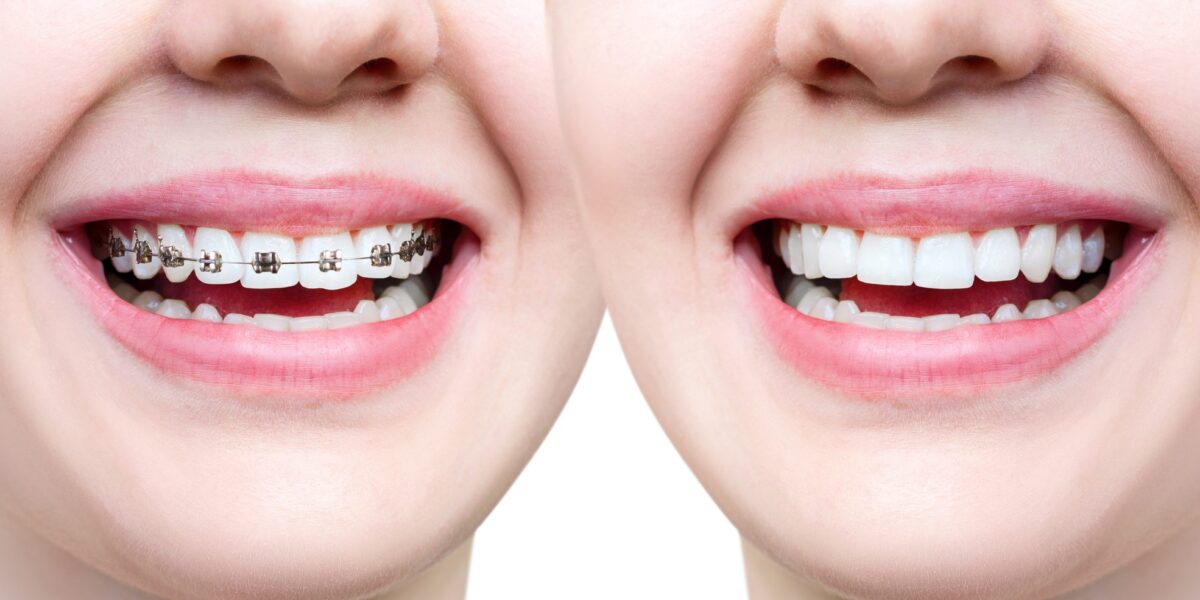
Introduction:
Orthodontic treatment is a significant investment in achieving a straighter, healthier smile. When it comes to straightening teeth, two popular options are traditional braces and Invisalign. Both methods have their unique advantages and considerations. In this article, we will explore the key factors to consider when choosing between braces and Invisalign, helping you make an informed decision for your orthodontic journey.
Braces: Tried and True
Traditional braces have been a reliable method for teeth straightening for many years. They consist of metal brackets bonded to the teeth and connected by wires. Here are few key points to consider:
Treatment Flexibility:
Braces are suitable for correcting various orthodontic issues, including severe misalignments and complex cases. They provide orthodontists with greater control over tooth movement, making them highly effective for comprehensive treatments.
Durability and Compliance:
Braces are permanently affixed to the teeth, making them a reliable and consistent treatment option. Since they cannot be removed, compliance is not an issue, as the treatment works continuously to straighten teeth.
Affordability:
In terms of cost, traditional braces are often more affordable compared to Invisalign. The overall expense can vary based on the severity of the case and the length of treatment.
Invisalign: Discreet and Removable
Invisalign is a modern alternative to braces, utilizing a series of clear, removable aligners to gradually move teeth into their desired positions. Let’s explore the advantages of Invisalign:
Aesthetics and Discretion:
Invisalign aligners are virtually invisible, making them an appealing choice for those seeking a discreet orthodontic treatment. They offer a more aesthetically pleasing option, particularly for individuals concerned about the appearance of traditional braces.
Removability and Convenience:
Invisalign aligners are removable, allowing you to easily brush, floss, and eat without restrictions. This feature promotes better oral hygiene and reduces the risk of decay or staining that can occur with fixed braces. Additionally, the convenience of removing aligners for special occasions or important events is an attractive aspect for many patients.
Comfort and Reduced Adjustments:
The smooth, custom-made aligners are designed to fit snugly over the teeth, minimizing discomfort often associated with traditional braces. Invisalign generally requires fewer adjustments and appointments compared to braces, resulting in fewer trips to the orthodontist.
Choosing the Right Option for You:
When deciding between braces and Invisalign, consider the following factors:
Orthodontic Needs:
The complexity of your case plays a significant role in determining the most suitable treatment option. Braces are generally recommended for more severe orthodontic issues, while Invisalign can address a wide range of moderate alignment concerns.
Lifestyle and Compliance:
Consider your lifestyle and commitment to treatment compliance. Invisalign requires wearing the aligners for 20-22 hours a day, removing them only for eating, drinking, and oral hygiene. If you prefer a treatment option that allows more flexibility, Invisalign may be a better fit for you.
Aesthetic Preferences:
If the appearance of your orthodontic treatment is a primary concern, Invisalign’s clear aligners provide a nearly invisible option. On the other hand, if aesthetics are not a major factor, traditional braces can effectively straighten teeth.
Financial Considerations:
Cost is an important aspect to evaluate. Traditional braces are often more cost-effective, but the overall price can vary depending on the complexity of the case and the duration of treatment. Invisalign tends to have a higher price tag but may offer added convenience and aesthetic benefits.
Conclusion:
Choosing between braces and Invisalign is a personal decision that depends on various factors, including the severity of your orthodontic needs, lifestyle preferences, aesthetic concerns, and budget considerations. Consulting with an experienced orthodontist is crucial to assess your specific case and guide you towards the most suitable treatment option. Remember, both braces and Invisalign can deliver remarkable results, helping you achieve a straighter, healthier smile that boosts your confidence and oral well-being.